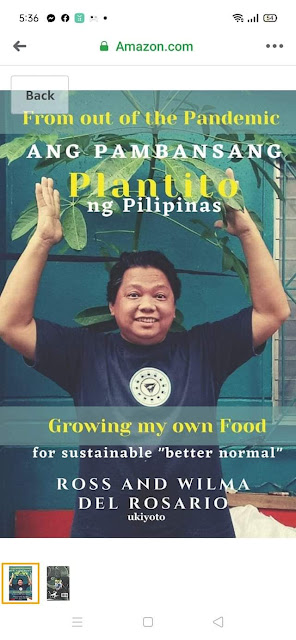Wazzup Pilipinas!?
Every May, the Philippines turns its gaze seaward to celebrate Ocean Month, honoring the nation’s lifeblood: our oceans. Cradled in the heart of the Coral Triangle, the Philippines is recognized as the global epicenter of marine biodiversity. Yet, beneath the shimmering turquoise waters lies a dire crisis threatening this underwater paradise—plastic pollution.
Nowhere is this paradox more evident than in the Verde Island Passage, the crown jewel of Philippine marine life, stretching between the provinces of Batangas and Mindoro. It is here, in the vibrant, coral-studded waters off Tingloy, Batangas, that a group of determined ocean guardians from Pure Oceans has been waging a seven-year war against the tide of plastic waste.
Paradise in Peril
Barangay Marikaban, a quiet coastal barangay in Tingloy, seems remote—tucked away from the city’s chaos and hum. But the waves don’t care about remoteness. They carry with them a relentless, global burden: a deluge of plastic.
On the shore, volunteers from Pure Oceans and local communities trudge across the sand, dodging driftwood and seaweed to scoop up sachets, soda bottles, bottle caps, plastic toys—even a lone lightsaber and the vacant gaze of dismembered doll heads. These aren’t just discarded items—they are the footprints of a global crisis.
A War Fought in Mesh Sacks
Tak Vergara of Pure Oceans stands before a crowd of over 30 volunteers, including barangay residents and members of the Philippine Coast Guard. In his hand is a red mesh sack. "We’re conducting a closed-loop cleanup," he says. "Each sack will contain a specific category of plastic waste. Once full, we’ll deliver it to appropriate recycling or recovery partners. This isn’t just collection—this is accountability."
The volunteers fan out across the beach, filling their sacks with the flotsam of modern convenience. Single-use sachets dominate the landscape—remnants of a “tingi” economy that serves daily needs but spawns long-lasting pollution. In a few hours, 175 kilos of waste are retrieved. But the beach is far from clean. The tide will bring more.
The Plastic Problem
Plastic, once hailed as a miracle material, has become a global plague. Durable, lightweight, and cheap, it’s used ubiquitously—but discarded just as readily. Designed for moments of convenience, it lingers for centuries. Scientists estimate that plastics take 400 years to decompose, if ever. And in the meantime, they break down into microplastics—tiny, nearly invisible threats that infiltrate food chains, ecosystems, and even our bodies.
In the Philippines alone, a staggering 163 million sachets are used daily, along with 48 million sando bags and 45 million labo bags, according to GAIA. The World Bank estimates that 2.7 million tons of plastic waste are generated annually in the country—20% of it ends up in our oceans.
And these oceans are choking. Whales and sea turtles mistake floating plastic for food. Coral reefs are suffocated by discarded nets. Even the deepest trenches of the sea—the Mariana Trench—have not escaped.
An Epicenter of Life—and Crisis
The Verde Island Passage isn’t just another marine region. It is the global epicenter of shorefish biodiversity. These coral reefs are more than tourist attractions—they are vital ecosystems and life sources for local communities. And yet, they are under siege.
"We can’t keep ignoring the plastic problem, especially here," says Pia Roxas Ocampo, the visionary founder of Pure Oceans. “Coastal cleanups are emergency interventions—not solutions. But they buy us time to protect what’s left.”
Since 2018, Pure Oceans has built partnerships with local governments, schools, NGOs, and corporations to create sustainable waste solutions. And crucially, they have embedded themselves in the community.
Plastic as Profit: A Local Solution
"We’re called the MRF Angels,” says Princess Aldovino, referring to their Materials Recovery Facility. “We buy cleaned plastic sachets and foils at PHP20 per kilo. These are downcycled into ‘pluffing’—plastic stuffing for locally made items like pillows, beanbags, and doorstoppers.”
In a country where sustainability must intersect with survival, this initiative is more than admirable—it’s essential. By monetizing waste, Pure Oceans empowers the community, especially senior citizens, to become stewards of the environment while earning from it.
Inside Tingloy’s modest workshops, trash is transformed. It’s not just recycling—it’s redemption.
Education, Responsibility, Replication
Pure Oceans’ mission extends beyond cleanups. They champion extended producer responsibility, push for corporate accountability, engage in environmental education, and develop localized waste management systems. Every mural painted, every sack collected, and every kilogram processed is a step toward systemic change.
"We’ve spent seven years learning," Pia says. "Now we’re ready to replicate this nationwide. But we can’t do it alone."
A Glimmer of Hope
As the day winds down at Caban Cove—a once pristine beach now blanketed with debris—volunteers continue their painstaking task. The scene is bittersweet. But beneath the plastic, the reef endures. Fish still dart between corals. Life, resilient and determined, persists.
Still, time is running out.
With 200 million metric tons of single-use plastics expected to be produced this year—equivalent to 10 million fully-loaded dump trucks—how many will find their way into the sea? How many beaches like Tingloy will be buried under the weight of our waste?
The answers remain uncertain. But the efforts of Pure Oceans provide a beacon of hope. And in these mesh sacks, in the calloused hands of volunteers, and in the spirit of the islanders, the tide may just be beginning to turn.
This Ocean Month, let’s remember: the sea gives us life. It’s time we return the favor.
Wazzup Pilipinas supports environmental solutions and local heroes like Pure Oceans who are working on the frontlines of the plastic crisis. If you want to get involved or support their initiatives, visit www.pureoceans.org.ph or follow their updates on social media.


.jpg)








.png)











.jpeg)





















 Ross is known as the Pambansang Blogger ng Pilipinas - An Information and Communication Technology (ICT) Professional by profession and a Social Media Evangelist by heart.
Ross is known as the Pambansang Blogger ng Pilipinas - An Information and Communication Technology (ICT) Professional by profession and a Social Media Evangelist by heart.






.jpg)




